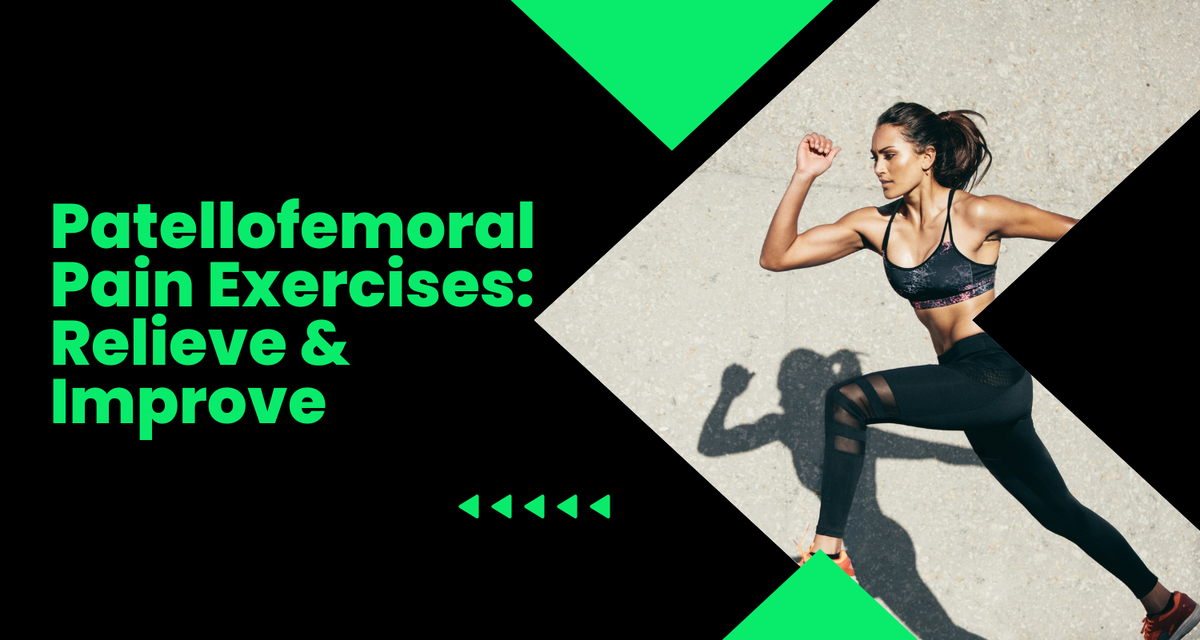Patellofemoral Pain Exercises: Relieve Discomfort and Improve Knee Function

Patellofemoral pain, also known as runner's knee, is a common condition characterized by pain around the kneecap (patella) that worsens with activities such as running, squatting, or climbing stairs.
While patellofemoral pain can be frustrating, especially for athletes and active individuals, targeted exercises can help alleviate discomfort and improve knee function.
In this article, we'll explore a range of effective exercises for patellofemoral pain that can help individuals manage symptoms and stay active.
Understanding Patellofemoral Pain
Patellofemoral pain syndrome occurs when the patella rubs against the groove of the femur (thigh bone) improperly, causing irritation and inflammation.
This misalignment can result from factors such as overuse, muscle imbalances, poor biomechanics, or structural issues in the knee joint.
Symptoms of patellofemoral pain typically include a dull, aching pain around the front of the knee, especially during activities that involve bending or straightening the knee.
Benefits of Exercise for Patellofemoral Pain
Exercise is an essential component of patellofemoral pain management for several reasons:
- Strengthening Muscles: Targeted exercises can help strengthen the muscles surrounding the knee, including the quadriceps, hamstrings, and glutes, to provide better support and stability.
- Improving Alignment: Certain exercises can help correct muscle imbalances and improve the alignment of the patella within the femoral groove, reducing friction and pain.
- Enhancing Flexibility: Stretching and flexibility exercises can help improve range of motion in the knee joint, reducing stiffness and discomfort.
- Promoting Joint Health: Regular exercise can stimulate the production of synovial fluid, which lubricates the knee joint and helps reduce friction during movement.
Effective Exercises for Patellofemoral Pain
Quadriceps Strengthening
Straight Leg Raises:
Lie on your back with one leg bent and the other straight.
Lift the straight leg off the ground, keeping the knee straight, then lower it back down.
Repeat for 10-15 repetitions on each leg.
Terminal Knee Extension:
Stand with your back against a wall and a rolled-up towel behind your knee.
Slowly straighten the knee, pushing into the towel, then return to the starting position.
Perform 2-3 sets of 10-15 repetitions.
Hamstring Strengthening
Hamstring Curls:
Lie on your stomach with your legs straight.
Bend one knee and bring your heel towards your buttocks, then lower it back down.
Perform 2-3 sets of 10-15 repetitions on each leg.
Glute Strengthening
Clamshells:
Lie on your side with your hips and knees bent.
Keeping your feet together, lift your top knee towards the ceiling, then lower it back down.
Perform 2-3 sets of 10-15 repetitions on each side.
Stretching and Flexibility
Quadriceps Stretch:
Stand upright and hold onto a wall or chair for balance.
Bend one knee and bring your heel towards your buttocks, grasping your ankle with your hand.
Hold the stretch for 30 seconds, then switch sides.
Hamstring Stretch:
Sit on the floor with one leg extended and the other bent.
Reach towards your toes on the extended leg, feeling a stretch in the back of the thigh.
Hold for 30 seconds, then switch legs.
Precautions and Considerations
Start with gentle exercises and gradually increase intensity and duration as tolerated.
Avoid exercises that exacerbate pain or discomfort, and listen to your body's signals.
Consult with a healthcare professional or physical therapist before starting any new exercise program, especially if you have a history of knee problems or injuries.
Conclusion
Patellofemoral pain can be a challenging condition to manage, but targeted exercises can help alleviate discomfort, improve knee function, and enhance overall quality of life.
By incorporating a variety of strengthening, stretching, and flexibility exercises into your routine, you can effectively manage symptoms of patellofemoral pain and stay active and healthy.
Remember to consult with your healthcare provider before starting any new exercise program, and to listen to your body's signals to ensure safe and effective workouts.
